Grasses are among the most versatile and diverse of all plant species. Here are 6 exciting ways to incorporate them into your garden
Creative coalition
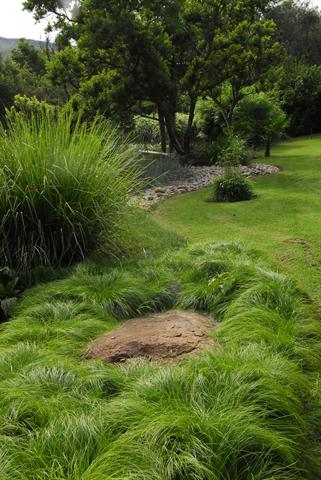
Low-maintenance grasses look right at home in modern minimalist or trendy prairie-style gardens. While a mass planting of a single species is both simple and stylish, if you’d prefer to pair different types together opt for those that have contrasting colours or forms for added interest.
“Deciduous grasses, which turn brown in winter, contrast well with the green foliage of evergreen varieties,” says Leon Scholtz of Bristlecone Nursery. Another stunning combination is the upright panicles of setaria with the curved, arching habit of Eragrostis curvula – both indigenous to South Africa.
Pot love
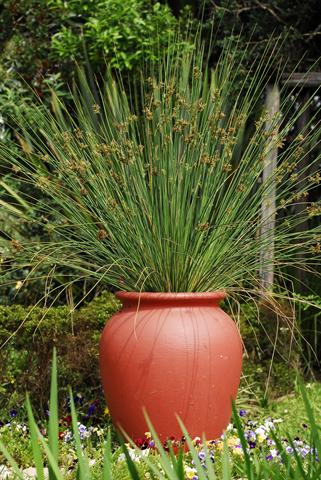
With an almost endless choice of size, texture, form and flowering period, grasses are one of the keynote plants for the modern garden. Certain varieties are worthy of a podium all of their own – a pot. Using evergreen varieties will allow you to enjoy a splash of green all year round.
Restios, seen in this pot, while not true grasses, have the same look and feel as certain grasses and will perform well in pots. For a more delicate feel, try grass-like weeping anthericum, which will give you a show of small, white star-shaped flowers through the summer months.
Soft centred
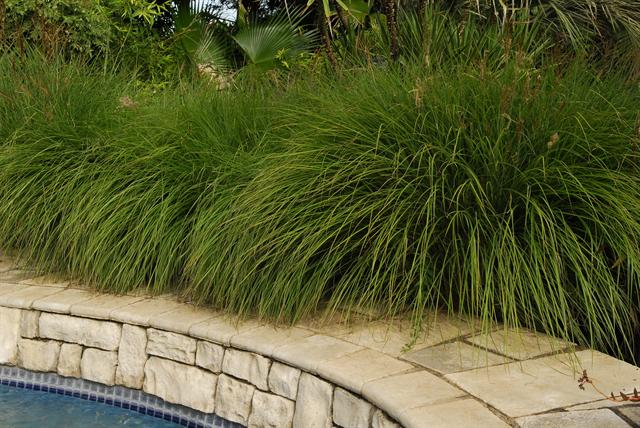
Grasses have the ability to soften and break the hard edges of pathways, decks and waterways. The key is to choose a grass that holds its form with a mounding effect, arching over the edge of the hard landscaping.
Species such as this miscanthus in the gardens of Bristlecone Nursery are great for larger areas, where they’ll sway elegantly in the wind, while certain varieties of carex are better suited to smaller gardens and more confined spaces, creating a soft, tufted look.
Chorus of colour
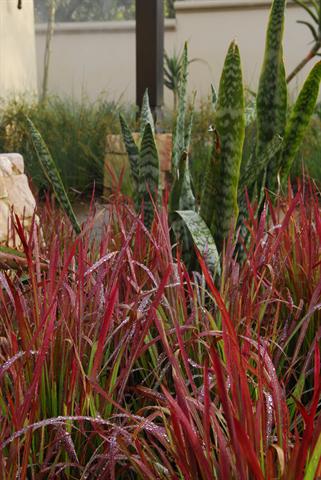
Grasses can provide colourful displays to rival the best annuals. Few plants can top the drama provided by the leaves of Japanese blood grass (Imperata cylindrical ‘Rubra’) (pictured), especially when it’s positioned so the sun shines through its sword-shaped, scarlet leaves.
Equally eye-catching are the burgundy-tinted leaves and fluffy, soft purple seed heads of purple fountain grass (Pennisetum setaceum ‘Rubrum’), which looks fantastic planted en masse. Indigenous Melinis nerviglumis, which has flower panicles that erupt in a cloud of pink and purple fading to white, is another good choice.
In the mix
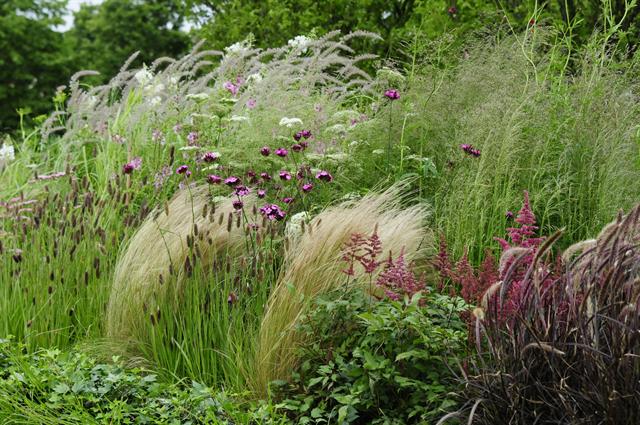
“Grasses are Mother Nature’s fillers; they create a canvas that allows other plants to stand out,” says Leon Kluge of Leon Kluge Garden Design.
As they provide the perfect framework for other perennials to flower and fade, grasses are an important feature of a fashionable prairie-style mixed planting like this one at Hampton Court Flower Show. Note how the colours of the pink and purple flowers are enhanced by the golden backdrop of Stipa tenuifolia.
On form
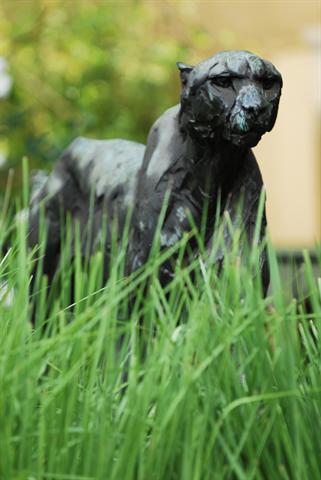
As many grasses provide year round interest, they’re a good choice to set off a garden sculpture. The strong, linear, upright form of some grasses complement bold, organic sculptures like this stalking cheetah by artist Dylan Lewis.
“If you’d like to soften and frame a sculpture, try evergreen and fine-leafed varieties such as the indigenous Aristida junciformis,” advises garden designer Leon Kluge.

